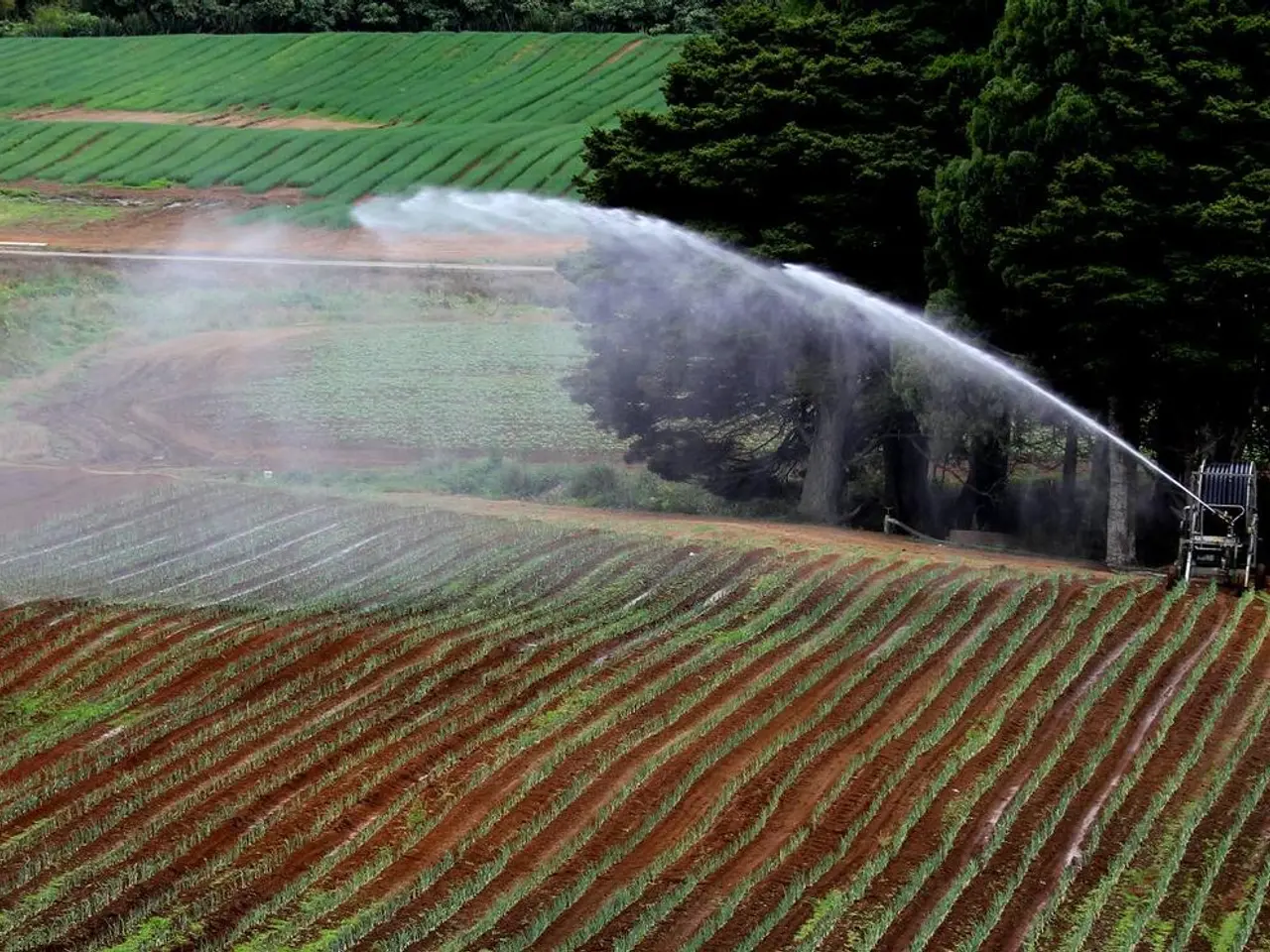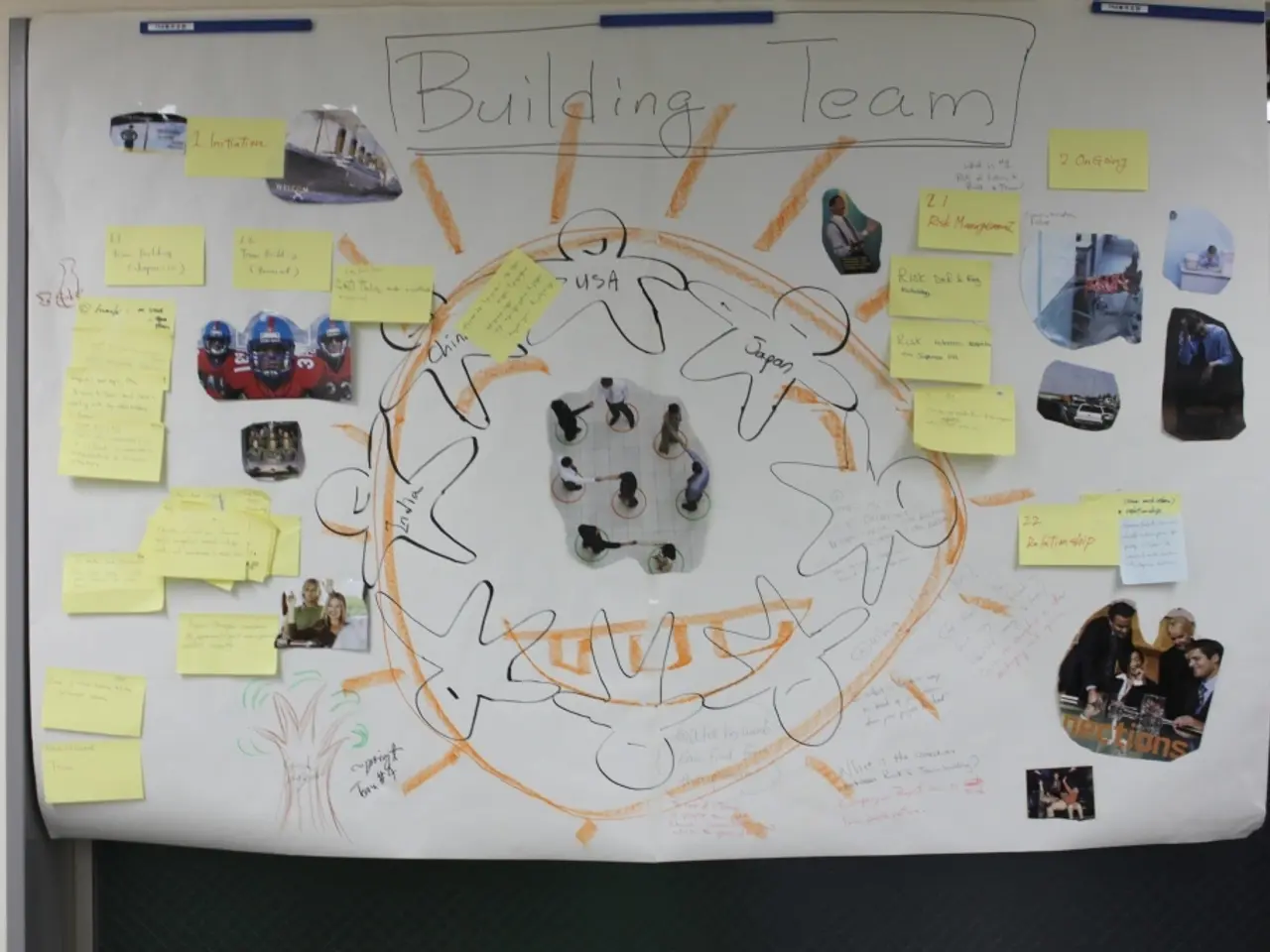AI Innovation Shifts Towards Rural Areas: Agricultural Sectors Embrace Artificial Intelligence
In a revolutionary shift, Artificial Intelligence (AI) is making a significant impact on the agricultural sector, transforming productivity, decision-making, and pest management. This technological revolution is not confined to the laboratory but is being implemented across the entire agricultural value chain, from research and development to farm-level decision support and retail operations.
One of the key implementations of AI is Precision Farming and Agronomy. By analysing data collected from satellite imagery, drones, and soil maps, AI enables farmers to manage crops and soil with unprecedented precision. This allows for optimised seed planting, fertility, and pest control tailored to each field's unique conditions, ultimately boosting productivity and sustainability.
AI-powered Predictive Analytics is another game-changer. These models forecast crop outcomes based on various environmental and input variables, enabling farmers to convert reactive practices into proactive ones. For instance, AI predicts how different hybrids will perform in specific soil types under varying moisture and fertility conditions, empowering farmers to make informed decisions.
AI-driven Pest Management is also proving to be a valuable tool. AI tools automate pest monitoring and identification, traditionally a labour-intensive process. This not only protects crops more efficiently but also reduces human labour costs.
AI is also revolutionising agribusiness operations, improving customer relations and optimising workflows in supply chain and field operations. Retailers like Key Cooperative use AI to provide seed and fertility recommendations, improving returns for growers and enhancing service delivery.
The success of AI integration depends on its integration with digital infrastructure, farmer training, accessible financing, and supportive regulation to ensure adoption beyond lab innovations into smallholder farmers' hands.
Leading companies and organisations driving AI innovation in agriculture include Key Cooperative, Syngenta, Salesforce, and the University of Delaware. Key Cooperative leverages AI for precision agronomy, while Syngenta pursues comprehensive AI solutions across agronomic advising, pest management, and input research. Salesforce contributes through AI-powered analytics and stakeholder collaboration, and the University of Delaware develops AI applications in entomology to automate pest monitoring.
The farming industry, facing a labour shortage, has a history of adopting the latest technology. Companies like Archer Daniels Midland (ADM) are at the forefront of this AI-driven agricultural boom. ADM is using AI to generate leads, cross-sell products, and create new artificial flavors more quickly and cheaply. AI could also help ADM shave costs from its supply chain and logistics networks.
The demand for meat is rising due to increasing wealth in poor countries and the popularity of meat-based diets in wealthier countries. Corn, a main ingredient in animal feed, is in high demand, and its price has a significant impact on ADM stock, as the company is a major player in commodity trading.
However, the price of corn is currently testing a bottom, suggesting it is overdue for a bounce, which could benefit ADM. Meanwhile, ADM is considering AI as part of its cost-cutting plan, which includes up to 700 layoffs and the closure of its commodity-trading business in Shanghai.
Despite the integration of AI, education levels among farm workers have increased significantly, with 41% of farm work being done by workers with at least some college education in 2017, compared to 4% in 1950. The trend of replacing human workers with AI is not limited to big tech companies and is also affecting small businesses.
In conclusion, the full potential of AI hinges on collaborative efforts among businesses, policymakers, and farmers to overcome technical and financial adoption barriers and scale innovative solutions to drive sustainable agricultural productivity growth worldwide.
- Amidst the rise of AI in agriculture, the farming sector can now engage in dividend investing by considering companies like Key Cooperative and Syngenta, both of which adopt AI technologies in their operations, potentially leading to increased farm dividends and growth.
- The integration of AI in the business of agricultural productivity, as seen in the implementation of Precision Farming and Agronomy, AI-powered Predictive Analytics, and AI-driven Pest Management, could pave the way for a new era of dividend growth stocks within the finance industry, fostering a symbiotic relationship between technology, finance, and business.




